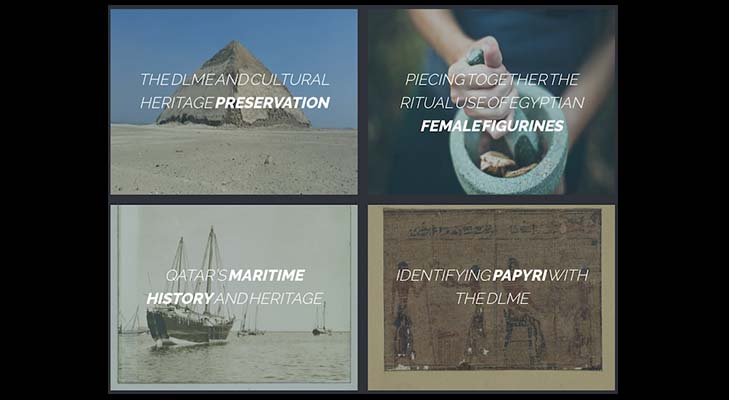The Council on Library and Information Resources (CLIR) released a prototype proof of concept for the Digital Library of the Middle East (DLME).

The prototype was developed in partnership with the Antiquities Coalition, Qatar National Library (QNL) – a member of Qatar Foundation – and Stanford Libraries, in collaboration with institutions and individuals across the Middle East and Northern Africa (MENA).
Created with funding from the Whiting Foundation, the current prototype includes approximately 135,000 objects. The DLME will encompass text, video, photographs, archives, manuscripts, 3D data, and maps on the region’s history covering over 12 millennia, curated by scholars, specialists and members of the living and vital cultures it represents. The platform, developed by Stanford Libraries, allows for the display of information in Romanised or Arabic forms.
CLIR President Charles Henry said that a digital bridge, like the successful platform prototype of the DLME, is a multi-dimensional bond that brings together many countries, people, and perspectives to collectively celebrate the preservation of cultural heritage.
DLME partners include cultural heritage organisations worldwide, who aim to contribute to a globally available resource that provides detailed descriptions and images of artefacts, along with culturally nuanced information about histories and provenance of these ‘objects’. Scholars in Cairo, schoolchildren in California and Ankara, travellers from Buenos Aires, and customs agents fighting artefact-trafficking in Singapore, among others, will benefit from access to the DLME.
Through close collaborations with stewards of cultural heritage in the Middle East, DLME aspires to bring the full richness of history to students, teachers, scholars, and citizens throughout the region and around the world, according to Daniel Reid, Executive Director of Whiting Foundation.
This proof-of-concept has been a crucial first step in building the technical infrastructure and beginning to establish the many partnerships necessary to achieve this important ambition.
Peter Herdrich, co-founder of Antiquities Coalition, and a principal investigator on the grant project, said that the intellectual leadership of regional partners is essential to the project’s success.
The UN calls inventory creation, digitisation, and access, a first step in protecting cultural heritage collections from looting and illicit trafficking, and that’s exactly what we intend to collaborate on.’
In conjunction with the launch, sample exhibits and case studies are being curated for the website. The first planned exhibits will focus on Egyptian and Near Eastern female figurines, Qatar maritime history and heritage, and on DLME and its support for cultural heritage preservation. For more information on DLME, visit dlme.clir.org.








